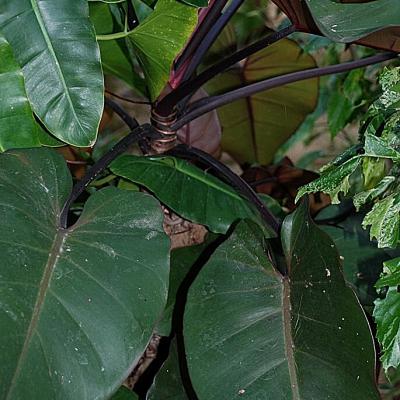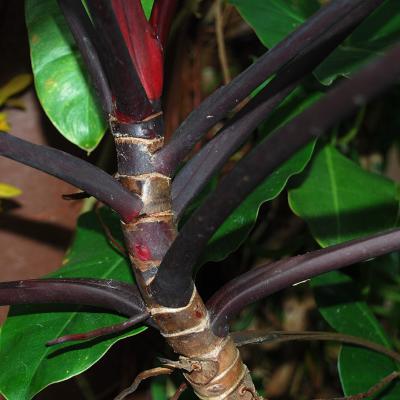Araceae-Philodendron-erubescens var. Red Emerald
Classification
- Botanical Family : Araceae
- Genus : Philodendron
- Epithet : erubescens var. Red Emerald
- German Family Name: Aronstabgewächse
- English Name: Red Emerald Philodendron, Red leaf Philodendron,
- Thai Name: ฟิโลเดนดรอน มรกตแดง
- Thai Phonetic:
- Author: K.Koch & Augustin
Water Requirements
Plant Type
Light Requirements
Cultivation
The leaves are long and arrow-shaped, glossy dark green on the leaf surface and copper-colored on the underside of leaves. The distinct veining is purple and also the petioles and the stem of the plant. Young leaves are dark red-purple.
Philodendron erubescens blooms rare. The flower consists of a white bulb and a dark red-purple spathe.
The plant is easy to maintain, prefers moist soil, but no over watering.
It needs enough light, but tolerates no sun.
The juice of this plant is poisonous. It causes skin irritation in contact with skin. If consumed the raw parts of the plant it causes irritation in the mouth, lips, throat and tongue.
Philodendron erubescens ist eine immergrüne Kletterpflanze, die sich mit ihren Luftwurzeln gern an Bäumen empor rankt oder an Kletterhilfen. Die Pflanze eignet sich daher besonders als Unterpflanzung unter Bäume.
Die Blätter sind lang und pfeilförmig, glänzend dunkelgrün an der Blattoberseite und kupferfarbig an der Blattunterseite. Die deutliche Äderung ist violett sowie auch die Blattstiele und der Pflanzenstamm. Junge Blätter sind ebenfalls dunkelrot-violett.
Philodendron erubescens blüht selten. Die Blüte besteht aus einem weißen Kolben und einer dunkelrot-violetten Spatha.
Die Pflanze ist pflegeleicht, bevorzugt feuchte Erde, jedoch keine Staunässe. Sie braucht genug Licht, verträgt jedoch keine Sonne.
Der Saft dieser Pflanze ist giftig. Er verursacht bei Hautkontakt Hautreizungen. Bei Einnahme bewirkt er Reizungen im Mund, auf Lippen, im Rachen und auf der Zunge.
Vermehrung: durch Kopfstecklinge oder Stammstecklinge


